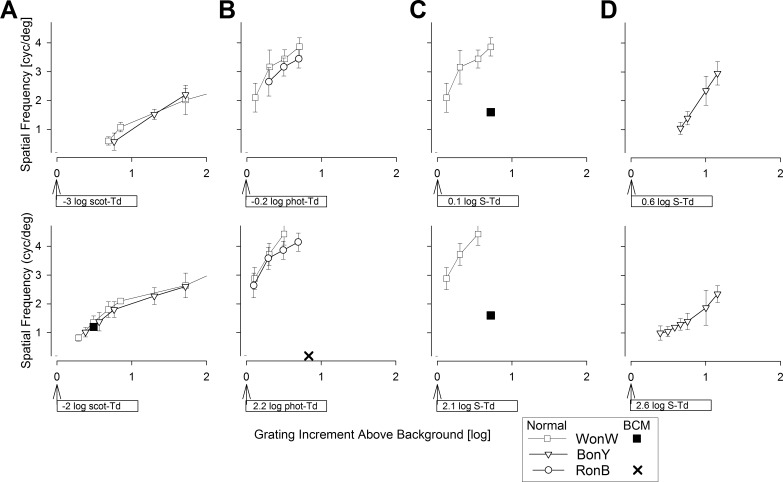Figure 4.
Spatial resolution under different adaptation conditions. (A) Dark-adapted eyes on −3 log scot-Td (upper) or on −2 log scot-Td (lower) W or Y backgrounds presented with WonW or BonY gratings of a range of scotopic increments. (B) Light-adapted eyes on −0.2 log phot-Td (upper) or on 2.2 log phot-Td (lower) W or B backgrounds presented with WonW or RonB gratings of a range of photopic increments. (C) Light-adapted eyes on 0.1 log S-Td (upper) or on 2.1 log S-Td (lower) W backgrounds presented with WonW gratings of a range of S increments. (D) Light-adapted eyes on 0.6 log S-Td (upper) or on 2.6 log S-Td (lower) Y backgrounds presented with BonY gratings of a range of S increments. Symbols show the discrimination of the direction of the highest spatial resolution grating under each grating/background condition. Results are from five normal subjects (white symbols) and one BCM patient (black symbols). The X in the lower image (B) represents the condition tested in the BCM patient who did not detect this RonB grating. Error bars are ±1 SD.

